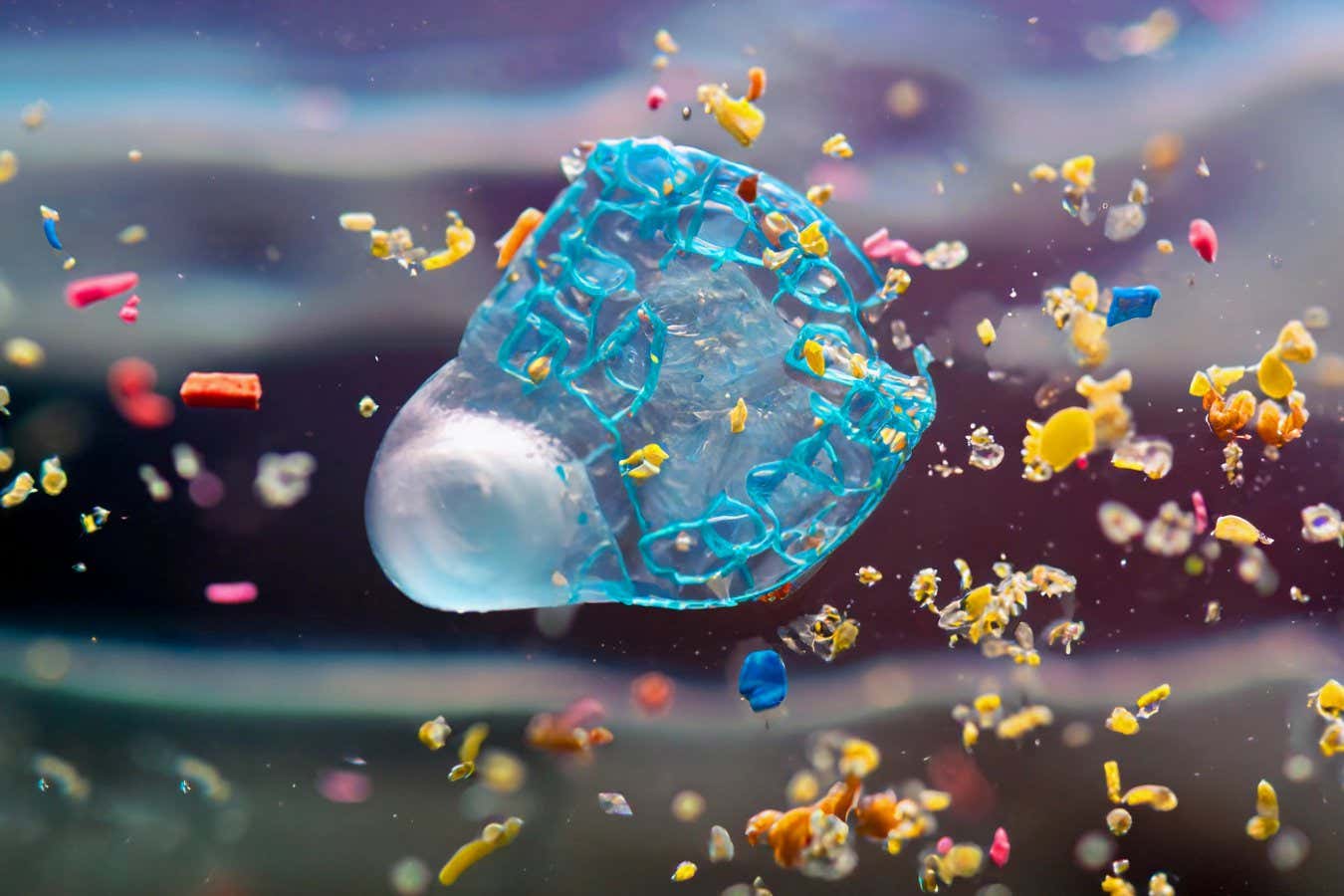

Microplastic particles have been linked to heart disease
Vitalii Rud/iStockphoto/Getty Images
People with artery plaques containing microplastics are more likely to have a heart attack or stroke than those with plastic-free plaques, suggesting microplastics may contribute to heart disease.
Microplastics form when sunlight, water and other agents erode plastics into fragments less than 5 millimetres long. At this size, the particles can make their way into our bodies and blood through food, water and even the air we breathe. Yet, little is known about their potential health effects.
So, Francesco Prattichizzo at IRCCS MultiMedica, a hospital in Italy, and his colleagues looked for evidence of microplastics in artery plaques from 257 adults. All of them underwent surgery between August 2019 and August 2020 to have the plaques removed from arteries carrying blood to the brain.
Chemical analysis detected plastics in plaques from 150 of the participants. Using a microscope, the researchers could see jagged particles in the plaques as well – visible evidence of the microplastics. The team then monitored the study participants until July 2023 and found that during this period, those whose plaques had contained microplastics had an elevated risk of heart disease and death. On average, they were more than four times as likely to die or have a heart attack or stroke as participants with plastic-free plaques, suggesting microplastics contribute to cardiovascular disease.
However, these findings only establish a link between microplastics and heart disease, rather than proving microplastics are the cause, says Prattichizzo. He and his colleagues couldn’t discount the possibility that other confounding factors might underlie the association such as diet or air pollution. They did, however, find high levels of inflammatory molecules in plastic-containing plaques. This might suggest that microplastics in the bloodstream exacerbate inflammation, which increases the risk of heart attacks and stroke, he says.
“Plastics contain a lot of different chemicals that we know can adversely impact health, so I’m not surprised that we are starting to see increasing evidence of health effects,” says Tracey Woodruff at the University of California, San Francisco.
“Plastic production is steadily increasing and is projected to continue increasing, so we must know how [and] if any of these molecules affect our health,” says Prattichizzo.
Topics:








